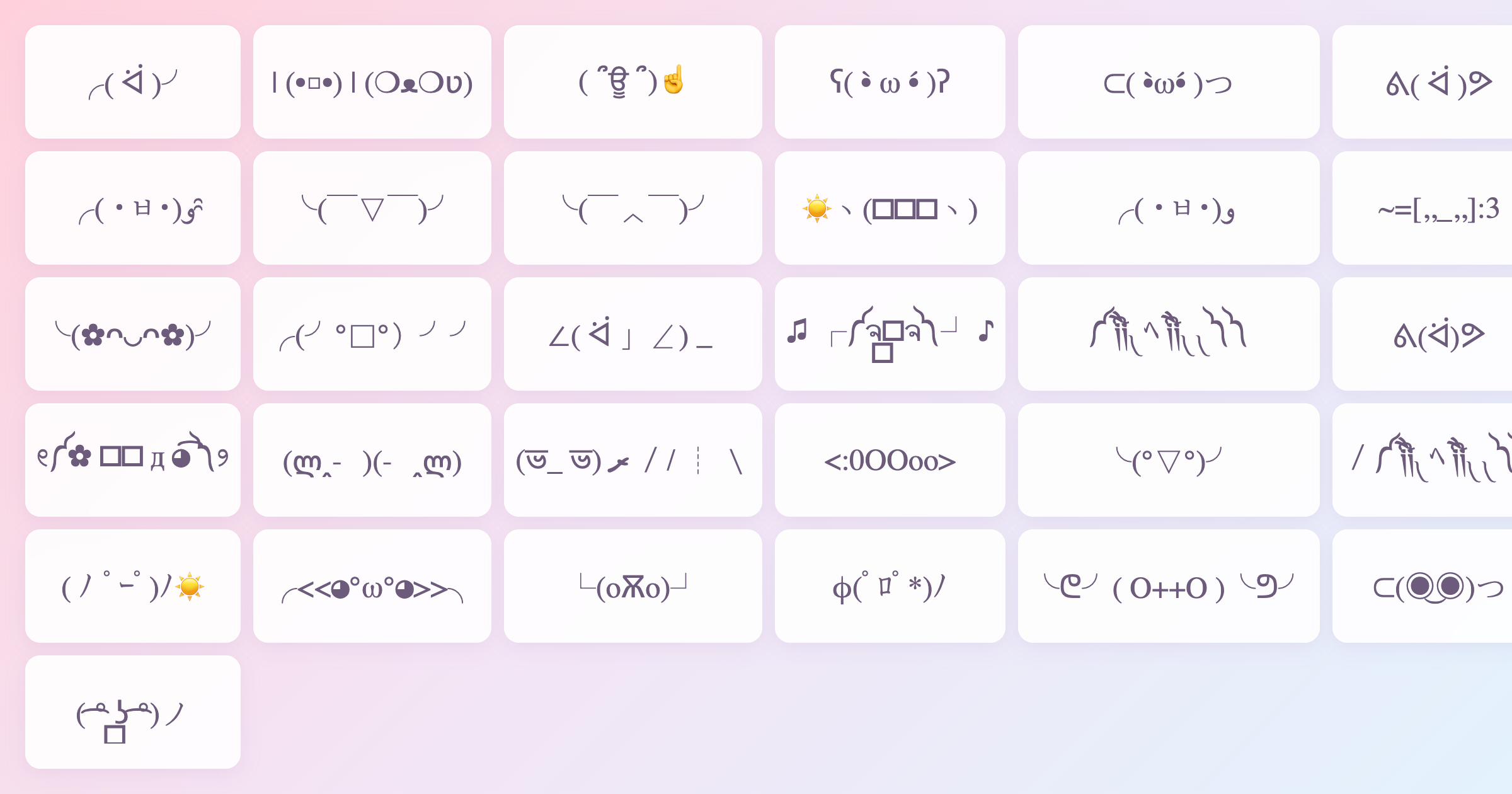Kaomoji & Emoticons
Character Kaomoji & Emoticons
Using high eyes to depict happy or joyful text faces, you can use characters like: ^,  ̄, ´, and . Mouths are also important; Japanese girls often use the character ω (omega) as the mouth for text faces, considering such text faces to be cute, or as they say, kawaii. You can also use ∀, ▽, and other similar smiling characters. Japanese people also like adding different effects (such as stars, tears of joy, etc.) to better emphasize emotions in text faces. Use the ; character (similar to sweat drops on the face) or characters indicating blushing (*, o) to express embarrassment. Additionally, you can have the text face cover its face with hands to indicate embarrassment. Frowning text faces can easily express dissatisfaction; you can use the >< character to express dissatisfaction or displeasure. Extra wrinkles can be added with the # character. You can also use eyes like ¬ ¬ or ¯ ¯ to express dissatisfaction, paired with a suitable mouth. These techniques are quite common in anime and manga. Use > < characters combined with special effects like ⌒☆ to depict pain. You can also use "x" type eyes to represent a "shocked" text face. Of course, there are many other ways. Doubtful text faces can use ¬ ¬, ¬ ¬, or arrows, which will make people feel like their eyes are looking elsewhere, as if hearing a lie. Use the character | to hide text faces, making them appear to be peeking at someone from behind a wall. The character φ looks like a pen if you want to create writing text faces. You can also add some underlines or dots to depict the writing process. Spider text faces can use characters /╱╮╭╲ to represent legs, and try to add several pairs of eyes.
(Click to copy)
You might also like
